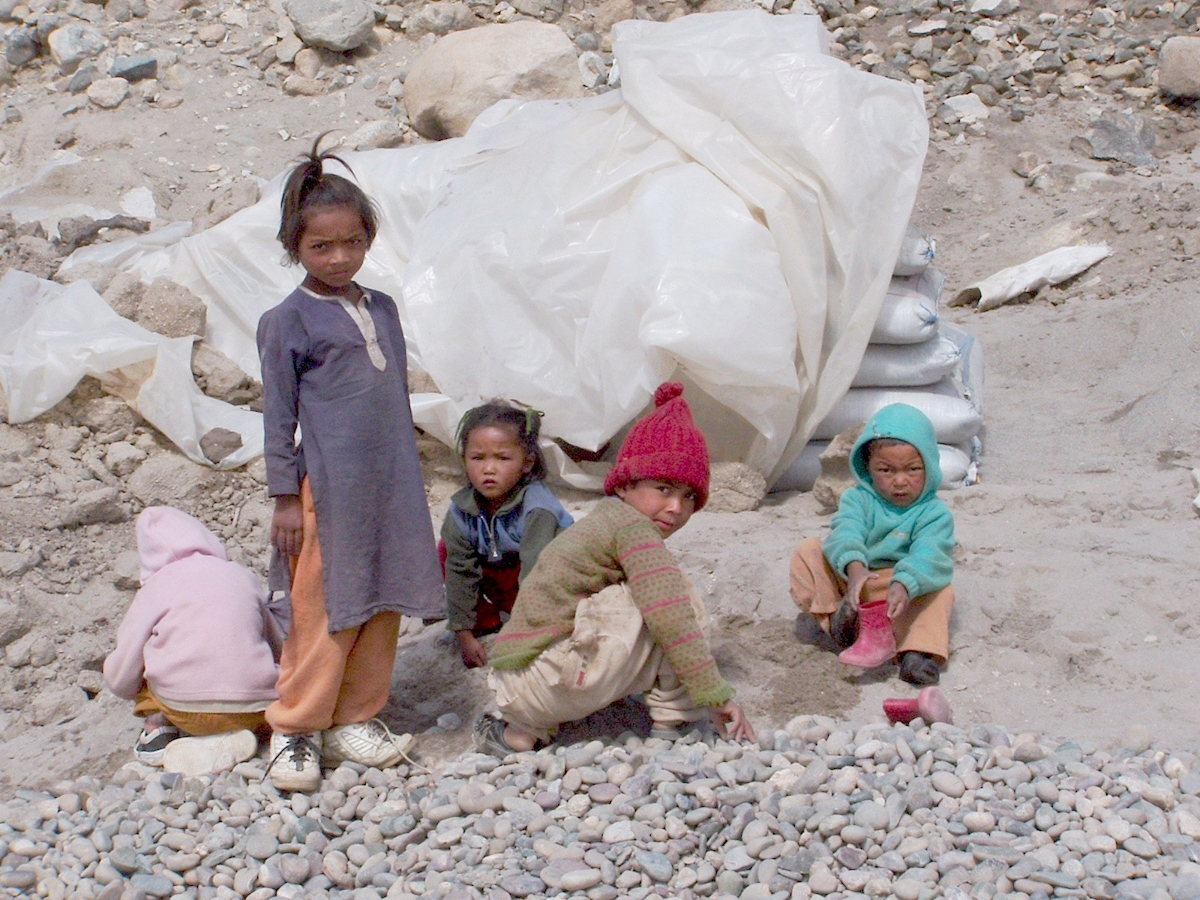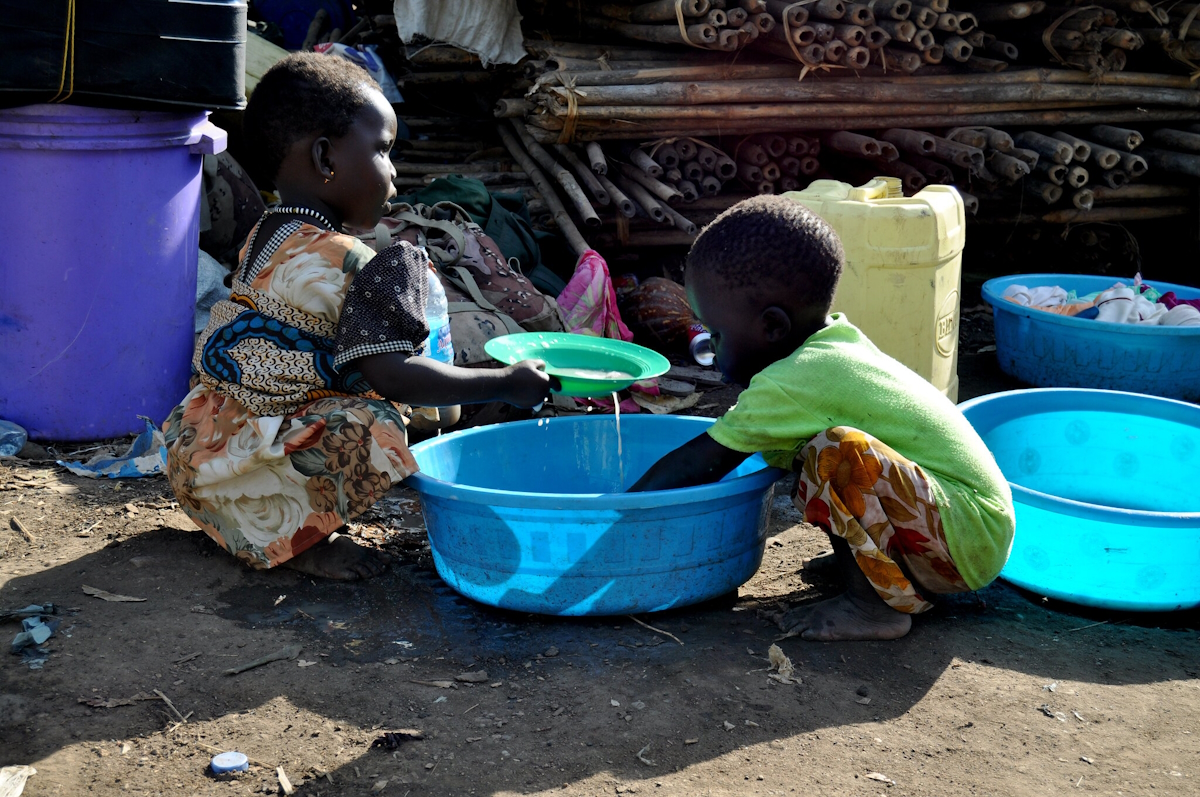Examining the displacement of millions of children due to climate-related disasters and the urgent need for mitigation

A report released by the International Organization for Migration (IOM) in the year 2022 posits that, as of 2020, there existed approximately 281 million individuals residing in nations other than their countries of origin, accounting for 3.6 percent of the global populace—a manifestation of international migration.
The report underscores that the migrant population has exhibited a substantial threefold increase over the past half-century. However, the endeavor to gauge the number of individuals displaced due to climate-related factors in recent years and to forecast future circumstances is a multifaceted undertaking, given the evolving nature of climate models and the multifarious motivations underpinning migration. For instance, while the Intergovernmental Panel on Climate Change (IPCC) estimated in 1990 that climate-induced migration would attain 200 million by 2050, a recent study issues a cautionary note, contending that factors such as water scarcity, food security, and natural calamities might displace as many as 1.2 billion people by 2050. In fact, a stark example from 2019 reveals that nearly 1,900 natural disasters led to 24.9 million fresh internal displacements across 140 countries.
Latin America and the Caribbean have transformed from accommodating a mere 7 million migrants in 1990 to sheltering a migrant population exceeding 25 million by 2020. While the sudden and substantial influx of migrants can pose challenges to host governments and communities, it concurrently presents an opportunity for regional development. This dynamism can yield more diverse and innovative societies, contingent upon the creation of necessary conditions to harness the potential of migrants—typically constituted by motivated young individuals endeavoring to enhance their lives and contribute their creativity and labor to the receiving nations.
We need to accommodate the changes that nature brings about in all ecosystems

Given the present-day prevalence of natural disasters, progressive environmental degradation, and enduring disparities across various global regions, it becomes evident that comprehensive, both national and international, public policies are essential. These policies should adopt an inclusive approach capable of concomitantly addressing the root causes and consequences of migration. It is imperative to acknowledge that the 21st century will indubitably be characterized as the century marked by extensive international migration.
The influence of climatic phenomena on the displacement of entire populations is incontrovertible. For instance, the advent of Hurricane Laura in August 2020 necessitated evacuation orders for over 1.5 million people in the regions of Texas and Louisiana. In the initial nine months of 2020, the United States experienced 16 weather-related disasters, each inflicting damages exceeding one billion dollars. In the Caribbean, Hurricane Dorian in 2019 resulted in 465,000 new displacements across seven nations, while in Brazil, floods and landslides forced an estimated 295,000 individuals from their homes in 2019.
Moreover, the gradual impacts of climate change, such as glacial melting affecting river water availability or coastal erosion resulting from rising sea levels, when coupled with preexisting vulnerabilities, significantly influence migration trends. For instance, in Central America, individuals in Guatemala migrate in the wake of droughts and floods that disrupt crop production, precipitating food shortages and poverty. In other Central American nations, violence and the absence of rule of law serve as the primary impetuses behind the migration of thousands. These processes transpire incrementally and may also be comprehended as economic migration, driven by the quest for peace, improved employment prospects, and means to sustain livelihoods.
Currently, we are witnessing how migratory movements are engendering substantial additional burdens on public services, escalating the perils of disasters and human catastrophes. Hence, it is of paramount importance to promptly comprehend and seek to ameliorate the ramifications of large-scale migration on transit nations and other magnetizing states.
When confronting the quandary of mass migration in the 21st century, it becomes imperative to address the multifaceted factors that precipitate it. It is imperative to recognize that migration, rather than being solely a predicament, also presents a profound prospect, contingent upon the formulation of appropriate political and sociocultural frameworks, to harness the creative potential of the multitude of young individuals constituting the majority among those embarking upon the momentous journey of migration. There is no room for doubt that the migration of millions of individuals represents both an opportunity and a challenge of collective significance.
A temperature increase exceeding 2 degrees Celsius would render regions inhabited by approximately half of the global population inhospitable

Because migrants flee those places where life is no longer sustainble, in a scenario marked by a 3-degree Celsius global temperature rise, South America in its entirety, as well as the eastern seaboard and central United States, would register heat and humidity levels surpassing thresholds deemed safe for human habitation on a substantial number of days annually.
Therefore, scientific studies have been underscoring the critical imperative of reducing emissions to avert a temperature increase of 2 degrees Celsius or more. Such an escalation would render extensive areas of the planet unsuitable for habitation, affecting the lives of over 4 billion people.
A recent research, conducted by diverse academic departments at the University of Pennsylvania and disseminated in the Proceedings of the National Academy of Sciences of the United States, employs scenarios featuring global temperature increments ranging from 1.5 to 4 degrees Celsius to pinpoint regions of the world where levels of heat and humidity would surpass the threshold of human endurance.
To accomplish this, the scientists undertook 462 distinct experiments to document the composite levels of heat, humidity, and physical exertion tolerable by individuals without experiencing a loss of core body temperature control.
Based on their findings, a young, healthy person’s climate tolerance limit is established at 31 degrees Celsius at 100% humidity, albeit this threshold exhibits variations contingent on compliance with these two parameters.
Harry Kenney, a professor of physiology at the University of Pennsylvania and co-author of the study, elucidates, «Humans perspire and increase blood circulation to the skin to maintain body temperature stability when exposed to heat. However, at specific levels of humidity and heat, the body becomes unable to enact these adjustments, resulting in a rise in core body temperature. Without immediate means to cool down, individuals may experience heatstroke and even heart attacks.»
Historically, this threshold has been exceeded for brief durations in some regions of Southeast Asia and the Middle East, leading to health conditions such as heart attacks, heatstroke, and other ailments associated with such climatic conditions.
The research outcomes underscore that if global temperatures rise by 2 degrees above pre-industrial levels, 2.2 billion residents of Pakistan and the Indus River Valley in India, along with 1 billion inhabitants of eastern China and 800 million people in sub-Saharan Africa, would endure extended periods of high-humidity heat annually that exceed human tolerance. It is noteworthy to highlight that these regions fall within lower-middle-income countries, where a substantial portion of those affected lacks access to amenities such as air conditioning or other effective means of mitigating the adverse health consequences of humid heat.
In a scenario characterized by a 3-degree Celsius global temperature increase, nearly the entirety of South America, as well as the eastern and central regions of the United States, would contend with heat and humidity levels surpassing safe thresholds on a substantial number of days annually.
The research relies on data considering core body temperature, with the caveat that during heatwaves, individuals are susceptible to health issues arising from various other factors. Moreover, the study underscores that the model serves to forecast trends but does not account for specific occurrences, such as heatwaves, which have been demonstrated to significantly elevate mortality rates wherever they materialize.
Over the course of the past six years, floods and storms have resulted in the displacement of a substantial 40 million children

Should the above explained prevailing trajectory persist, and prospects indicate that it is unlikely to reverse, the UN children’s agency has projected that climate change related flooding will compel an additional 96 million children to experience displacement in the next three decades. This sobering assessment has been articulated in the report titled ‘Children Displaced by Climate Change’ by the UN children’s agency.
River floods and deluges have precipitated the enforced displacement of 40.9 million children worldwide from 2016 to 2021, with China and the Philippines bearing the brunt of these occurrences, as revealed in a report published by UNICEF.
In the event that this disconcerting pattern endures, and as indications suggest, it is improbable to be rectified, river flooding is anticipated to displace an additional 96 million children over the next 30 years, according to the estimates provided by the UN children’s agency in their report, ‘Children Displaced by Climate Change.’
Floods constitute, by a considerable margin, the most extreme climatic phenomenon engendering mass human displacement, surpassing extreme droughts, which have resulted in the forced migration of 1.3 million individuals, predominantly within the African continent, as well as wildfires.
While in absolute terms, China and the Philippines lead in the count of children displaced by floods, the gravity of the situation becomes even more pronounced when viewed in terms of the percentage of the population in island nations like Dominica or Vanuatu, or in states within the Horn of Africa such as South Sudan and Somalia.
Paradoxical as it may seem, these large-scale displacements can be attributed to a positive outcome of technological advancement—early warning systems now permit the anticipation of floods and the organization of evacuations. However, UNICEF sounds a cautionary note regarding the psychological trauma inflicted upon children forced to abandon their homes and schools, uncertain of their eventual return.
The most economically disadvantaged countries, as cited in the report, including Haiti and Mozambique, are where immediate action concerning risk mitigation and adaptation is most urgently warranted, as their limited financial capacity constrains post-disaster reconstruction efforts.
UNICEF has consequently embarked on collaborative efforts with several of the most vulnerable nations to preemptively address future flood-related challenges and diminish the risks of displacement. These initiatives are meticulously designed to accommodate the unique vulnerabilities of their child populations.
A significant challenge for the near future
The significant and growing issue of climate-induced migration, particularly its impact on children, is a matter of profound concern. The alarming statistics of 40 million children displaced in the past six years and projections of 96 million more in the next three decades paint a troubling picture. Floods, driven by climate change, are the predominant driver of mass migration, posing a significant challenge to the affected nations.
While technological progress has enabled early warning systems and evacuation strategies, the trauma endured by displaced children remains a pressing concern. Additionally, the report emphasizes the disproportionate impact on the poorest countries, where limited resources hinder reconstruction efforts. In response, UNICEF is working closely with at-risk nations to develop strategies that prioritize child populations and seek to mitigate the adverse effects of climate-induced displacement. Addressing this issue requires a comprehensive, global effort, recognizing that safeguarding the well-being of our planet’s most vulnerable inhabitants is a moral and humanitarian imperative.
